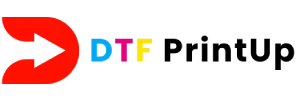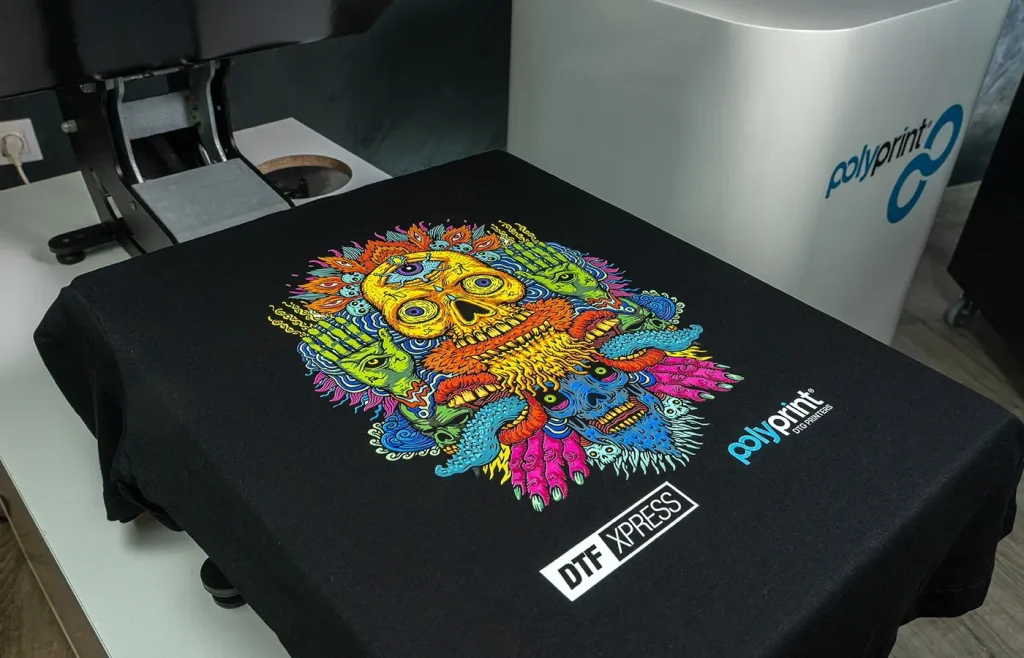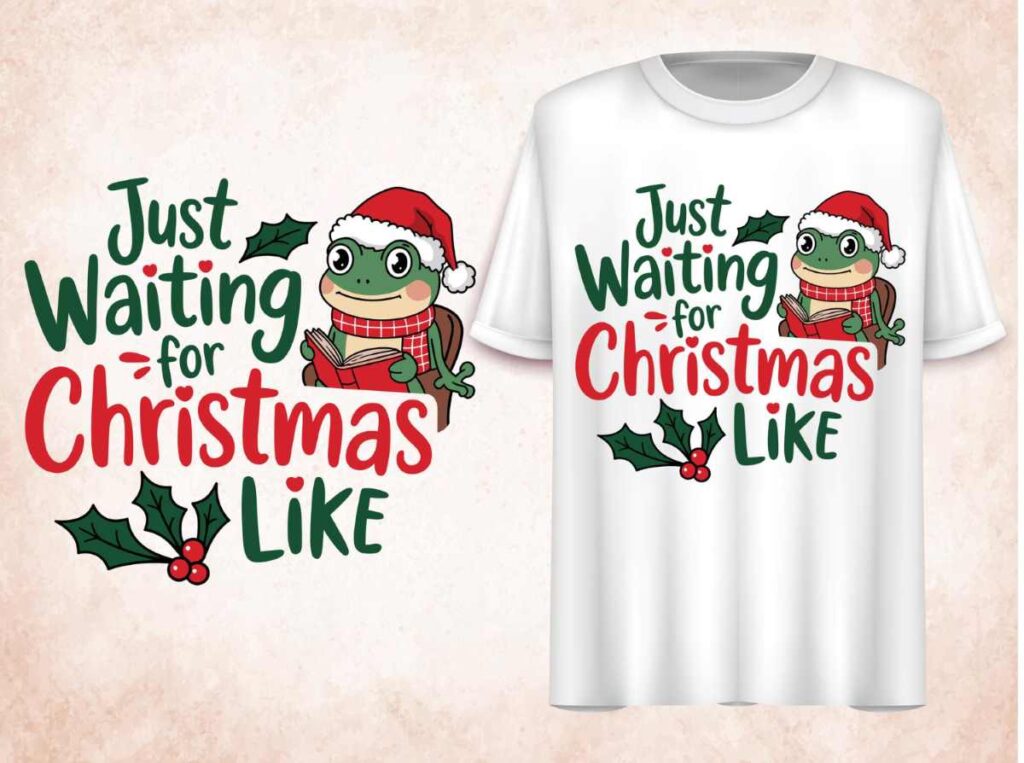In the dynamic world of textile printing, DTF printing has rapidly emerged as a revolutionary technology that is reshaping the landscape of custom apparel. Direct-to-Film (DTF) printing combines cutting-edge printing techniques with eco-friendly practices, making it an increasingly popular choice among businesses and consumers alike. The future of printing is bright with DTF’s ability to deliver vibrant, high-quality designs that adhere to a variety of fabrics. As awareness of sustainable printing solutions rises, DTF is positioned to tap into the growing demand for environmentally responsible practices within the textile printing technology sector. With an optimistic outlook for the DTF printer market, it’s clear that this innovative method will not only dominate but also redefine the expectations of personalized fashion.
Direct-to-Film printing, often abbreviated as DTF, represents a significant advancement within the realm of textile printing technologies. This modern approach facilitates the transfer of intricate designs onto garments using a specially coated film, setting it apart from traditional methods like screen printing and direct-to-garment (DTG) techniques. By leveraging the potential of this innovative printing process, businesses can offer custom apparel options that fulfill the rising consumer demand for personalization. Additionally, the eco-conscious nature of this method aligns perfectly with the shift toward sustainable printing practices, ensuring that DTF remains at the forefront of the evolving printing landscape. As the DTF printer market continues to expand, it opens up exciting possibilities for creative exploration in the fashion industry.
The Transformative Impact of DTF Printing on Custom Apparel
DTF printing has revolutionized the custom apparel market, making it easier for designers and entrepreneurs to bring their creative visions to life. Unlike traditional methods, such as screen printing, DTF allows for intricate designs and vibrant colors to be printed on a variety of fabric types. This versatility enables businesses to cater to a wider audience, offering personalized clothing options that appeal to contemporary consumer tastes. As a result, the custom apparel industry is witnessing a remarkable transformation, driven by the capabilities DTF printing provides.
Furthermore, DTF printing is not just about offering custom sizes or designs; it’s about enhancing the overall consumer experience. With the capability to produce small runs at a lower cost, fashion designers and clothing brands can quickly respond to trends and demands. This adaptability is crucial in the fast-paced fashion industry, where the ability to produce unique pieces can distinguish a brand from its competitors. Hence, DTF is positioning itself as a cornerstone in the future of custom apparel.
Innovations in Textile Printing Technology
As the textile printing technology landscape evolves, innovations continue to emerge, propelling methods like DTF to the forefront. The recent advancements in DTF printers, including faster printing speeds and improved ink formulations, have greatly enhanced production efficiency. These technological updates are significant as they not only streamline the printing process but also ensure that the quality of prints meets the high expectations of modern consumers. Such developments are instrumental in establishing DTF printing as a reliable choice for both large-scale manufacturing and small businesses alike.
In addition to speed and quality, innovation in DTF printing also encompasses improvements in color vibrancy and durability. Enhanced ink adhesion technologies are enabling longer-lasting prints that withstand regular use and washing, making DTF a practical choice for various retail applications. In an era where consumers gravitate towards sustainable and durable products, these innovations affirm the potential of DTF printing in redefining textile printing standards.
The Cost-Effectiveness of DTF Printing
Cost considerations play a significant role in the adoption of printing methods across industries. DTF printing stands out due to its cost-effectiveness, particularly when compared to traditional screen printing setups. With lower initial equipment requirements and reduced material waste, businesses can operate efficiently while producing high-quality custom apparel. This financial accessibility makes DTF not just a smart choice for large companies, but also an enticing option for small entrepreneurs and startups looking to make their mark in the apparel market.
Moreover, the efficiency of DTF printing extends to the production process itself. With the capability to create small batches for various customer requirements without substantial financial risk, businesses can experiment with designs and collections without the fear of loss. The rapid turnaround times enable retailers to keep up with ever-changing fashion trends, ensuring that they maximize their market opportunities while minimizing unnecessary expenses. These cost advantages are crucial in fostering a creative and competitive printing landscape.
Sustainability in DTF Printing Practices
As consumer awareness about environmental issues grows, businesses in the printing sector are increasingly adopting sustainable practices. DTF printing is leading the way in this space by utilizing water-based inks, which are less harmful to the environment compared to traditional solvent-based inks. This eco-friendly approach resonates with today’s eco-conscious consumers, creating a significant competitive edge for businesses that prioritize sustainability in their operations. The inherent low environmental footprint of DTF printing aligns perfectly with current trends in both consumer behavior and corporate responsibility.
Furthermore, the use of sustainable practices is not just beneficial for the environment; it also enhances brand reputation. Companies that embrace DTF printing can effectively market their commitment to sustainability, attracting a demographic that values environmentally friendly options. In a landscape where consumers are keen on supporting brands aligned with their values, DTF printing stands out as a forward-thinking solution that combines quality, creativity, and responsibility.
Meeting Market Demand with DTF Technology
The surge in demand for personalized products is reshaping the landscape of the printing industry, and DTF technology is at the forefront of this trend. As more customers seek unique and individualized items, DTF printing provides a powerful solution for businesses looking to accommodate these desires. Whether it’s for custom event apparel, personalized gifts, or bespoke fashion, DTF technology empowers retailers and print shops to offer tailored solutions that resonate with their customers’ needs, effectively capturing the growing personalization market.
Moreover, DTF printing’s flexibility allows businesses to pivot quickly in response to changing consumer preferences. Companies can easily alter designs and production runs to match seasonal trends or specific customer requests. This responsiveness is vital in retaining customer loyalty and ensuring that the business can adapt to the fast-paced nature of the fashion industry. As the demand for customization intensifies, DTF technology will continue to play a crucial role in providing innovative solutions that meet these evolving market demands.
The Future Outlook for DTF Printing in Textile Industry
Looking ahead, the outlook for DTF printing within the textile industry appears promising, reflecting a broad acceptance and integration of this innovative technology. As consumer expectations continue to evolve, the demand for high-quality, customizable options is expected to increase. DTF printing aligns perfectly with these expectations, promising vibrant prints, quick turnaround times, and the ability to cater to niche markets. This adaptability provides a solid foundation for growth in the coming years.
In addition, continuous advancements in DTF printer technologies will likely introduce even more capabilities, enhancing product offerings and driving market penetration. The vision for the future includes a more robust DTF printer market, cementing DTF printing’s status as an essential fixture in the world of textile printing. As more businesses adopt this revolutionary technology, DTF is set to redefine the printing landscape, establishing new benchmarks for quality and sustainability.
Frequently Asked Questions
What is DTF printing and how does it work?
DTF printing, or Direct-to-Film printing, is a modern textile printing technology that transfers ink onto a specially coated film. This film is then applied to fabrics using heat and pressure, resulting in vibrant prints suitable for various apparel. DTF printing is gaining popularity due to its versatility and affordability in creating custom apparel.
How is DTF printing contributing to the future of custom apparel?
DTF printing is revolutionizing the custom apparel industry by offering an efficient method to produce intricate designs on various fabric types. Its ability to meet the growing demand for personalization in fashion makes it a key player in the future of custom apparel.
What are the environmental benefits of DTF printing?
DTF printing utilizes water-based inks, which have a lower environmental impact compared to traditional inks. This sustainable printing method aligns with consumer demand for eco-friendly practices, positioning DTF as a responsible choice in the textile printing landscape.
What factors are driving the growth of the DTF printer market?
The DTF printer market is experiencing rapid growth due to a shift towards personalized fashion and sustainability. Innovations in DTF technology, along with its cost-effectiveness, enable businesses to cater to unique consumer preferences, fueling the expansion of DTF printing.
How does DTF printing compare to other textile printing technologies?
Compared to traditional textile printing methods like screen printing and direct-to-garment (DTG), DTF printing offers more versatility, higher print quality, and lower setup costs. This makes DTF printing a preferred choice for businesses looking to innovate in custom apparel.
What advancements are being made in DTF printing technology?
Advancements in DTF printing technology include the development of high-speed printers with improved ink formulations and capabilities. These innovations enhance production efficiency and print quality, solidifying DTF printing’s position in the textile printing industry.
| Key Points | Details |
|---|---|
| Introduction | DTF printing revolutionizes custom apparel with versatility and eco-friendliness. |
| Overview of DTF Printing | Transfers high-quality ink onto coated film for vibrant prints on various fabrics. |
| 1. Rapid Industry Growth | Growing consumer trend towards personalized fashion boosts demand for DTF printers. |
| 2. Cost-Effectiveness | Lower setup costs make it accessible for small businesses and entrepreneurs. |
| 3. Environmental Considerations | Utilizes water-based inks, aligning with trends towards sustainability. |
| 4. Technological Advances | High-speed DTF printers with better ink formulations enhance production quality. |
| 5. Market Demand | Customization trend fuels DTF’s relevance in retail and print shops. |
| Future Outlook | DTF printing set to expand and enhance quality and customization offerings. |
Summary
DTF printing is revolutionizing the textile printing industry with its blend of affordability, versatility, and eco-friendliness. As the popularity of personalized apparel surges, DTF stands at the forefront, offering innovative solutions that cater to the evolving demands of consumers. The combination of cost-effectiveness and sustainable practices makes DTF printing an ideal choice for businesses aiming for growth in today’s competitive landscape. Furthermore, continuous technological advancements ensure that DTF printing not only meets but exceeds consumer expectations for quality and customization. As we embrace this transformative era in printing, it is clear that DTF will play a pivotal role in shaping the future of custom apparel.



